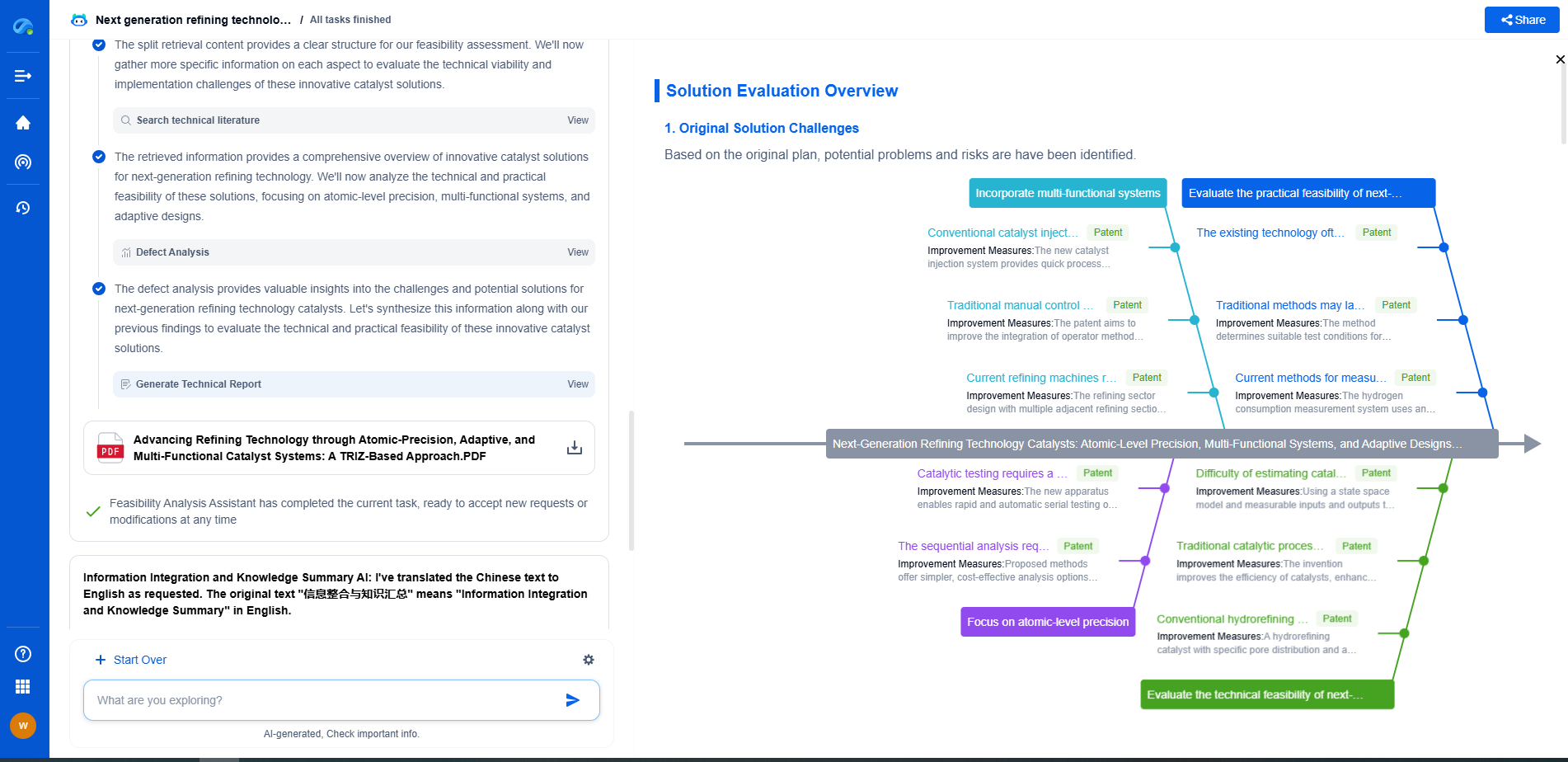Which programming language is best for robot arms?
JUN 26, 2025 |
In the rapidly evolving world of robotics, selecting the right programming language for robot arms is crucial for optimizing performance, flexibility, and ease of development. When it comes to programming robot arms, developers must consider various factors, including the complexity of tasks, real-time performance, ease of integration, and community support. In this article, we will explore several programming languages commonly used for robot arm development and discuss their advantages and disadvantages to help you make an informed decision.
Python: The Popular Choice for Robotics
Python has gained immense popularity in the robotics community due to its simplicity and readability. It is widely used for programming robot arms, primarily because of its extensive libraries and frameworks, such as ROS (Robot Operating System). Python's clear syntax allows developers to write and debug code quickly, making it an excellent choice for prototyping and research.
One of the main advantages of Python is its vast ecosystem of libraries that support various robotic functions, including computer vision, machine learning, and kinematics. Additionally, Python's supportive community provides a wealth of resources and tutorials, making it easier for newcomers to get started with robot programming.
However, Python might not be ideal for real-time applications that require high-speed execution. Its interpreted nature can lead to slower performance compared to compiled languages. Thus, while Python is excellent for control and prototyping, it may require integration with other languages for tasks demanding real-time precision.
C++: The Powerhouse for Real-Time Performance
C++ is a powerful programming language highly favored in robotics, especially for applications requiring real-time performance and low-level hardware interaction. With C++, developers can optimize code for speed and efficiency, making it a preferred choice for controlling robot arms in industrial settings where precision and reliability are paramount.
C++ is known for its robustness, allowing developers to manage memory manually and fine-tune algorithms for optimal performance. This level of control is critical in robotics, where even minor inefficiencies can lead to significant operational issues.
While C++ offers superior performance, it also presents a steeper learning curve, especially for beginners. Understanding complex concepts like pointers and manual memory management is essential, but the payoff in terms of efficiency and reliability can be significant.
Java: Balancing Ease of Use and Performance
Java is another popular language in robotics, known for its portability, object-oriented design, and ease of use. It offers a good balance between performance and accessibility, making it suitable for various robotic applications, including robot arms.
Java's platform independence allows for seamless deployment across different systems, and its vast array of libraries and frameworks provides developers with the tools needed to build robust robotic solutions. Additionally, Java's automatic memory management reduces the risk of memory leaks, simplifying the development process.
However, Java may not deliver the same level of real-time performance as C++, which can be a limitation in time-sensitive robotic operations. Nonetheless, for educational purposes, simulation, and less demanding applications, Java remains a strong contender.
MATLAB: Ideal for Simulation and Control Systems
MATLAB is renowned for its capabilities in numerical computing and is frequently used in robotics for modeling, simulation, and designing control systems. Its powerful simulation tools and extensive library support make it highly effective for developing algorithms and control strategies for robot arms.
MATLAB's intuitive interface and built-in functions allow engineers and scientists to prototype quickly and validate concepts before implementation. Furthermore, its specialized toolboxes for robotics offer pre-built functions that simplify tasks like trajectory planning and sensor integration.
While MATLAB excels in simulation and algorithm development, it is not typically used as the primary language for deploying robot control software due to its performance limitations compared to languages like C++.
Conclusion
Choosing the best programming language for robot arms depends largely on the specific requirements of your project. For those prioritizing rapid prototyping and ease of development, Python is a compelling choice. C++ is ideal for applications demanding high-performance and real-time control, while Java offers a balanced approach suitable for various educational and practical applications. MATLAB remains unmatched for simulation and control system design.
Ultimately, the decision should be guided by the specific needs of your robot arm project, including the complexity of tasks, real-time requirements, and the expertise of your development team. Understanding the strengths and limitations of each language will enable you to make an informed decision, ensuring the success of your robotic endeavors.
Ready to Redefine Your Robotics R&D Workflow?
Whether you're designing next-generation robotic arms, optimizing manipulator kinematics, or mining patent data for innovation insights, Patsnap Eureka, our cutting-edge AI assistant, is built for R&D and IP professionals in high-tech industries, is built to accelerate every step of your journey.
No more getting buried in thousands of documents or wasting time on repetitive technical analysis. Our AI Agent helps R&D and IP teams in high-tech enterprises save hundreds of hours, reduce risk of oversight, and move from concept to prototype faster than ever before.
👉 Experience how AI can revolutionize your robotics innovation cycle. Explore Patsnap Eureka today and see the difference.
- R&D
- Intellectual Property
- Life Sciences
- Materials
- Tech Scout
- Unparalleled Data Quality
- Higher Quality Content
- 60% Fewer Hallucinations
Browse by: Latest US Patents, China's latest patents, Technical Efficacy Thesaurus, Application Domain, Technology Topic, Popular Technical Reports.
© 2025 PatSnap. All rights reserved.Legal|Privacy policy|Modern Slavery Act Transparency Statement|Sitemap|About US| Contact US: help@patsnap.com

